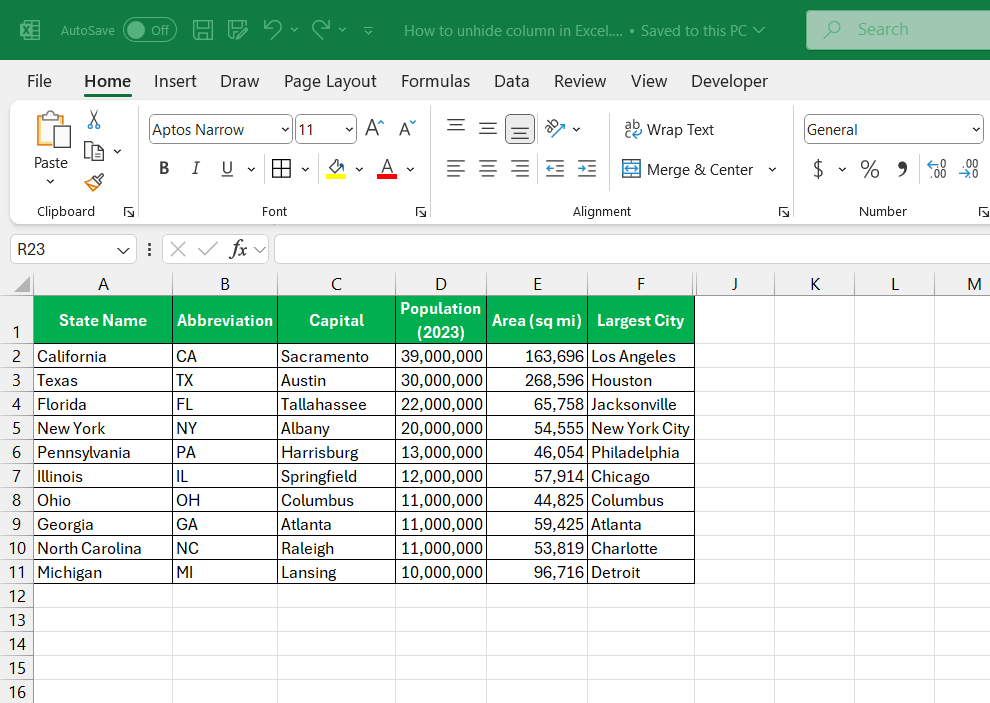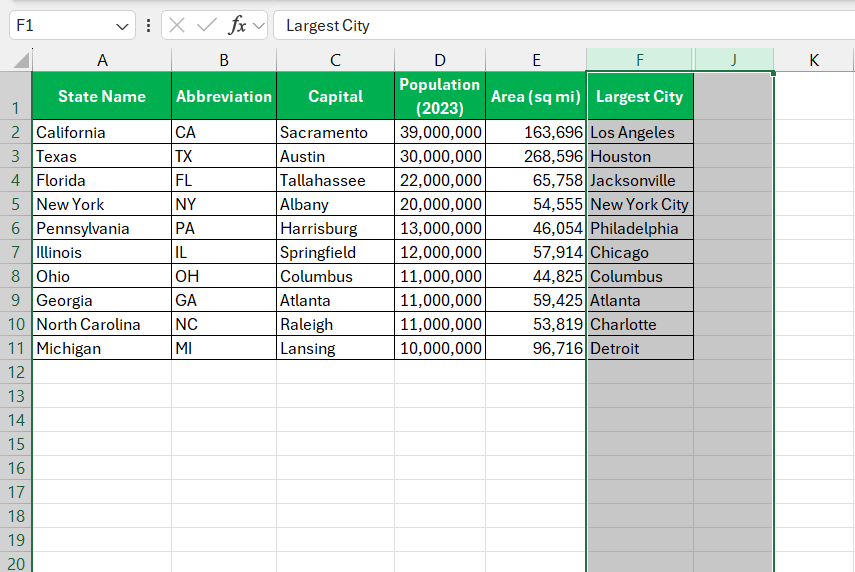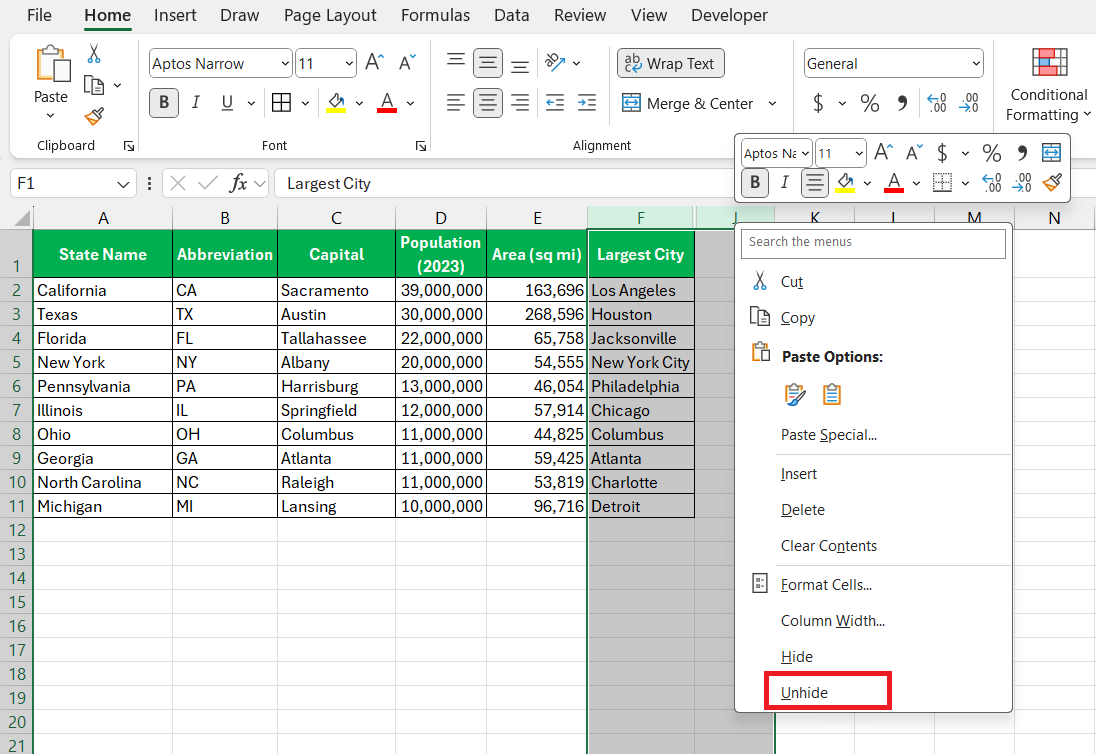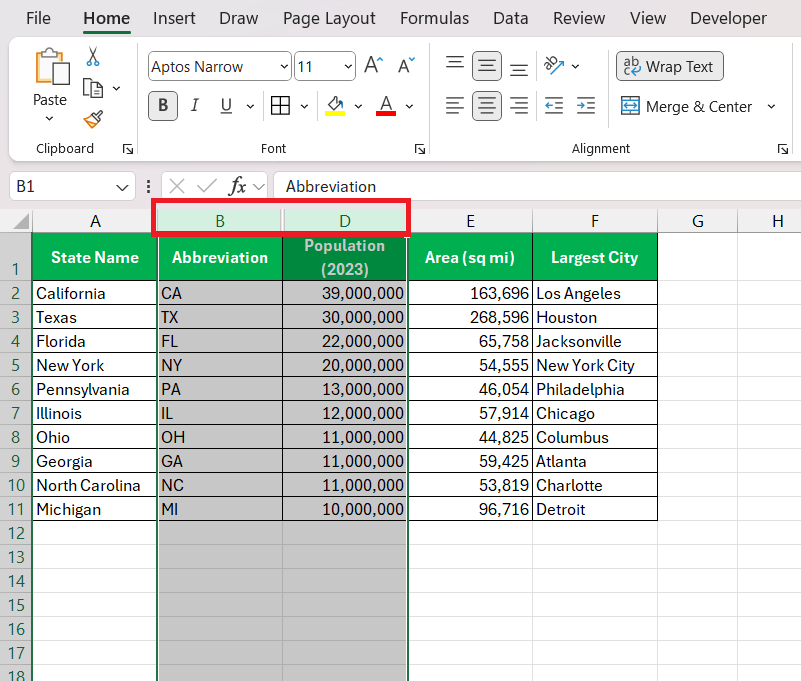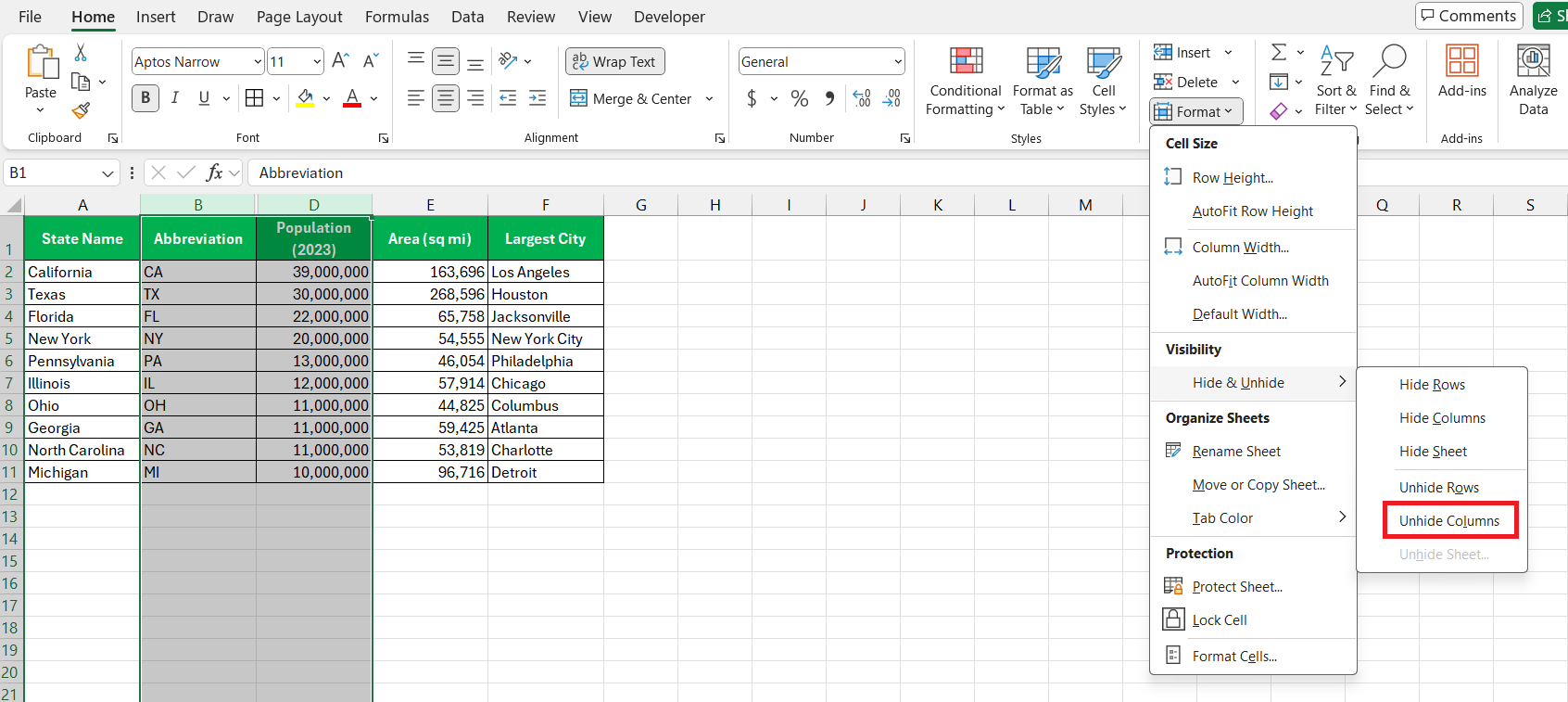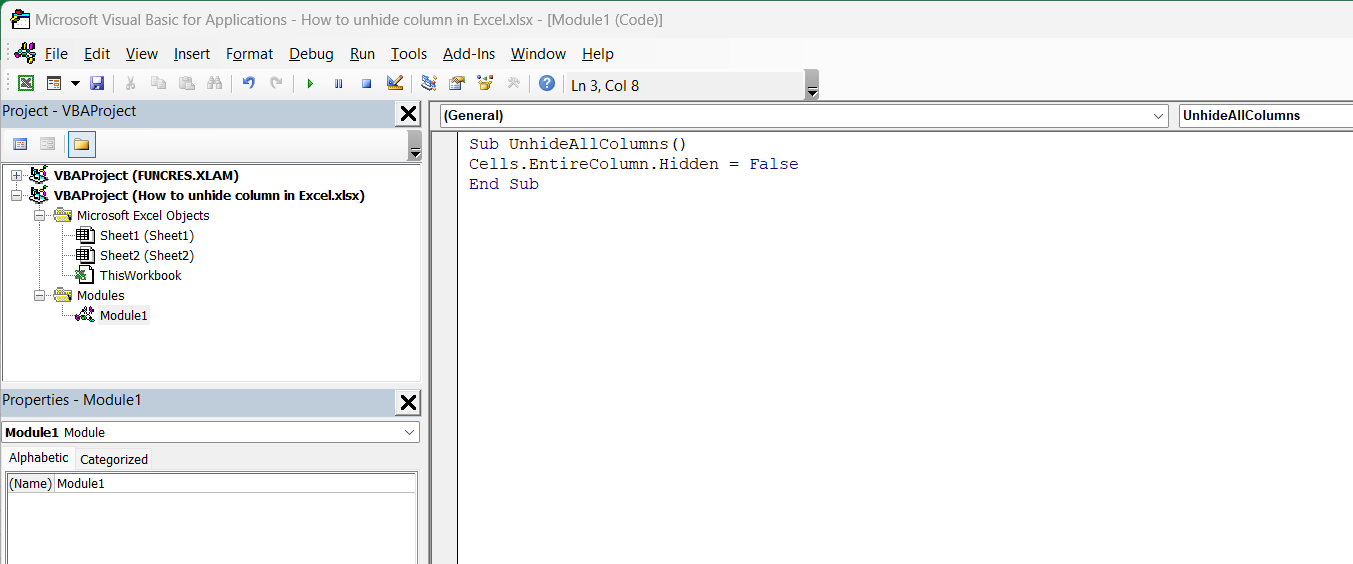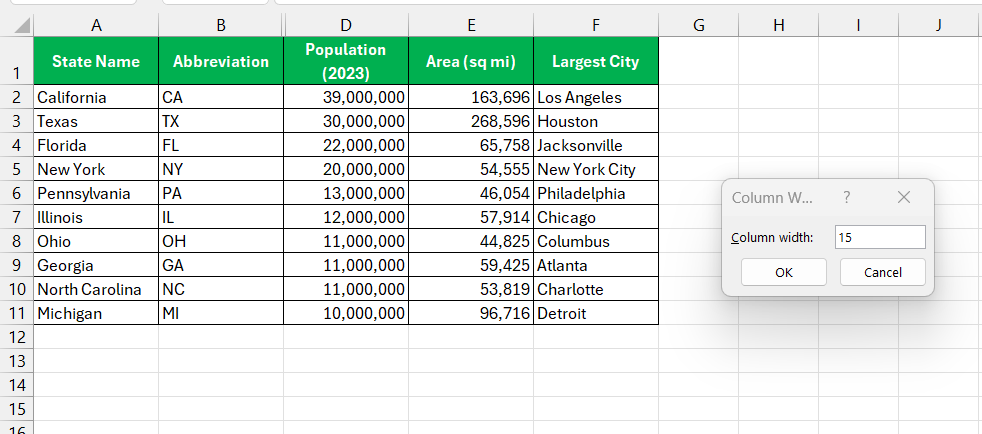In Excel, managing and viewing your data effectively often requires unhiding columns that may have been concealed. Hidden columns can obstruct your workflow, making it challenging to access crucial information. Whether due to accidental hiding or intentional organization, knowing how to unhide columns is essential for maintaining an efficient and organized spreadsheet. This guide will walk you through several straightforward methods to reveal hidden columns and get your data back in view.
Key Takeaways:
- Hidden Columns Disrupt Workflow: Concealed columns in Excel can obstruct access to important data, impacting productivity and efficiency.
- Unhiding Techniques: You can unhide columns using the context menu, the Home tab, or keyboard shortcuts, each offering a quick solution to reveal hidden data.
- Column A Challenge: Unhiding Column A requires a specific approach, as there is no adjacent column to select on its left side.
- VBA Macros: Advanced users can employ VBA macros to automate the process of unhiding columns, saving time and effort.
- Troubleshooting: If standard methods fail, check for sheet protection, column width settings, or possible macros affecting visibility.
Table of Contents
Introduction
The Frustration with Hidden Columns in Excel
I understand the vexation that hidden columns in Excel can cause. Often, I’ve sat down to work on a spreadsheet shared by a colleague, only to realize that I can’t see all the information I need. Whether it’s data comparison, data entry, or a review, missing columns can disrupt our workflow and leave us feeling helpless.
Unveiling the Mysteries of Column A
Column A presents a peculiar challenge when it comes to hiding and unhiding in Excel. As the very first column in a spreadsheet, there isn’t an immediate column to its left to select for revealing its content. This has led me to delve into the more nuanced features of Excel to effectively manage such scenarios. Over time, I have realized that understanding the right tricks is key to mastering Excel’s full capabilities, especially when it comes to the elusive Column A.
Quick and Simple Methods on How to Unhide Column
Unhiding a Column Using the Context Menu
STEP 1: Open Your Workbook: Start by opening the Excel workbook that contains the hidden column.
STEP 2: Select Adjacent Columns: Click on the column headers immediately to the left and right of the hidden column. For example, if columns G, H and I are hidden, click on column F and column J headers. This will highlight the hidden columns.
STEP 3: Right-Click and Unhide: With the adjacent columns selected, right-click on the selected area. From the context menu that appears, choose “Unhide.” The hidden column will now reappear between the columns you selected.
The columns will be unhidden now.
Using the Home Tab to Unhide a Column
STEP 1: Select Columns: Click on the headers of the columns adjacent to the hidden column. For instance, if column C is hidden, select columns B and D.
STEP 2: Navigate to the Home Tab: Go to the “Home” tab on the Ribbon at the top of the Excel window.
STEP 3: Unhide via the Format Menu: In the “Cells” group on the Home tab, click on “Format.” Hover over “Hide & Unhide,” and then select “Unhide Columns” from the dropdown menu.
Keyboard Shortcuts to the Rescue
As an avid Excel user, keyboard shortcuts have become my saving grace for efficiency. To unhide columns without the hassle of navigating through menus, there’s a neat combination that works wonders: pressing Ctrl, Shift, and zero (0) keys together instantly unveils any hidden columns.
Alternatively, when dealing with multiple hidden columns, the shortcut Alt + H + O + U + L specifically targets and resolves this issue by revealing all hidden columns in a jiff.
Shortcuts aren’t just time-savers; they’re a silent language of proficiency that once learned, enable us to handle tasks more effectively. Embracing these keystroke combinations allows us to navigate Excel with a harmonious flow that can greatly enhance our productivity.
Advanced Techniques for Revealing Hidden Columns
The Power of VBA Macros
I can attest to the transformative power of VBA macros for revealing hidden columns, having used them to save hours of manual work. For example, a simple macro like Sub UnhideAllColumns() Cells.EntireColumn.Hidden = False End Sub can turn a tedious task into one that’s executed with a single click.
By inserting a new module in the Visual Basic for Applications (VBA) editor and pasting this code, I’ve effectively automated the unhide process.
Macros like these harness the deep capabilities of Excel and adapt the software to our unique needs. It’s like having a personal assistant within the program, standing by to execute complex tasks on command.
Troubleshooting Common Issues
What to Do When Standard Methods Fail
When the usual tricks don’t work to unhide columns in Excel, I delve deeper into potential reasons why. One effective method is to check that the worksheet isn’t protected, as this would prevent changes. To do this, I go to the Review tab and see if the ‘Unprotect Sheet’ option is available.
If that’s not the problem, my next step is to inspect the column width. Occasionally, columns are set to a zero width accidentally, making them invisible. I rectify this by selecting the surrounding columns, right-clicking, choosing ‘Column Width,’ and then entering a positive number.
For persistent issues, it might be necessary to look into more advanced solutions such as checking for macros that may be affecting visibility or querying colleagues for any bespoke processes they’ve employed on the worksheet.
Identifying and Resolving Complex Problems
Dealing with complex problems that prevent unhiding columns in Excel demands a systematic approach. Initially, I like to ascertain whether the issue is file-specific or system-wide by attempting to unhide columns in different Excel files. If the problem is localized, it likely lies within the file settings or content.
Next, I usually verify the workbook structure. Sometimes, columns are not merely hidden but rather collapsed within grouped data. Expanding groups or using the Data tab’s ‘Ungroup’ feature can reveal these concealed columns.
Persistent issues may indicate a glitch in Excel itself, wherein I consider updates or repairs to the application.
FAQs
How do I unhide an entire column in Excel?
To unhide an entire column in Excel, simply right-click on the headers of the columns flanking the hidden column and select ‘Unhide’ from the context menu. If it’s Column A, you’ll need to select Cell A1 and then the unhide option. This reveals the column instantly.
How do I unhide all columns in Excel quickly?
To unhide all columns in Excel swiftly, press Ctrl + A to select all cells, then right-click any column header and select ‘Unhide’. Or, use the ribbon: go to Home tab, click ‘Format’, hover over ‘Hide & Unhide’, and select ‘Unhide Columns‘. All columns will become visible.
Can I unhide column A using a mobile version of Excel?
Yes, in the mobile version of Excel, tap the selects all icon at the top-left corner to select the entire sheet, then tap the column headers. Choose ‘Unhide’ from the menu, and column A will become visible.
What is the shortcut for unhide all columns in Excel?
The shortcut to unhide all columns in Excel is Alt + H + O + U + L. This multi-key sequence, when pressed in order, commands Excel to reveal any hidden columns in the worksheet.
Why can’t I unhide a column?
If you can’t unhide a column in Excel, it may be due to the sheet being protected, column widths set to zero, or a freezing pane issue. Check sheet protection under the Review tab, adjust column width, and ensure no panes are frozen under the View tab.
John Michaloudis is a former accountant and finance analyst at General Electric, a Microsoft MVP since 2020, an Amazon #1 bestselling author of 4 Microsoft Excel books and teacher of Microsoft Excel & Office over at his flagship MyExcelOnline Academy Online Course.

